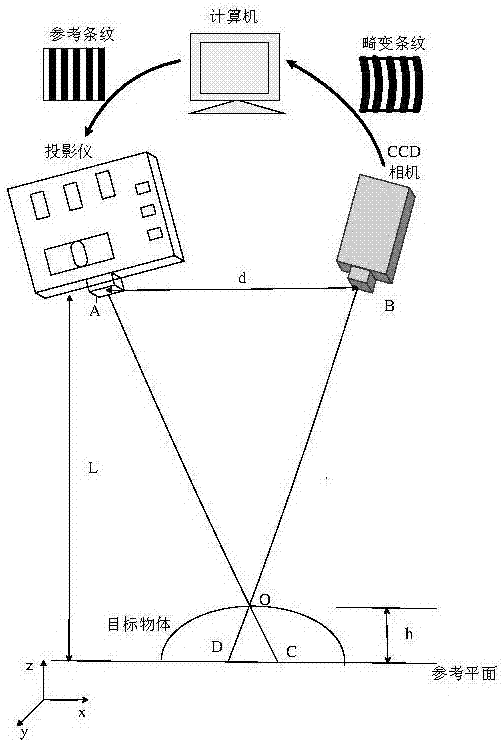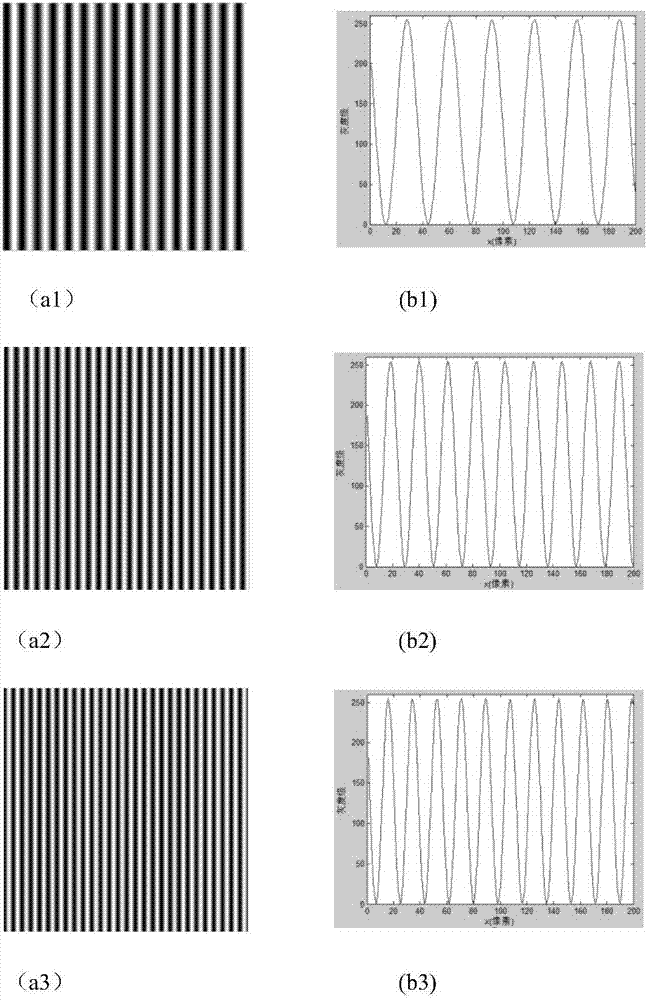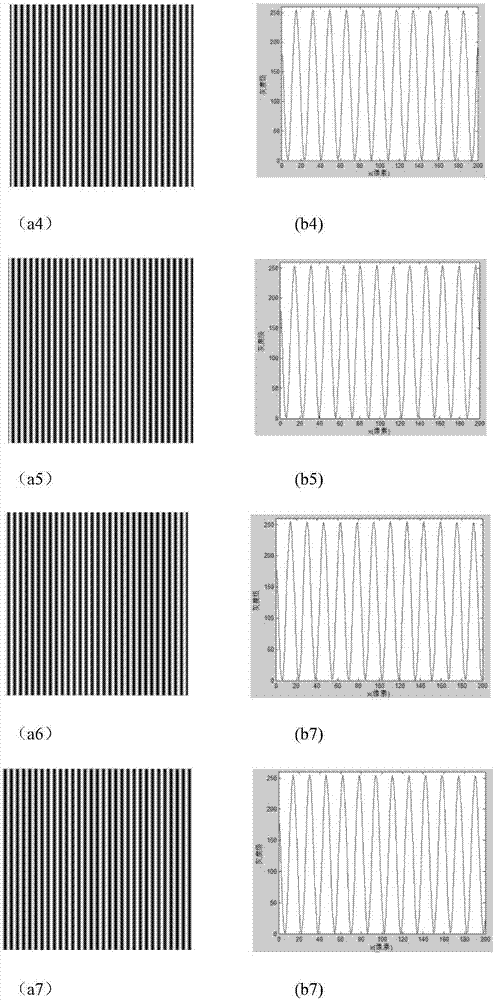Adaptive lighting optimization method based on sinusoidal grating projection
A technology of sinusoidal grating and optimization method, applied in the field of adaptive optics, can solve problems such as unfavorable impact on decision-making and execution, inapplicability to industrial automation, loss of pixel information, etc., to meet low-cost system construction, avoid adverse effects, and simple construction Effect
- Summary
- Abstract
- Description
- Claims
- Application Information
AI Technical Summary
Problems solved by technology
Method used
Image
Examples
Embodiment Construction
[0023] Below in conjunction with accompanying drawing and specific example the present invention will be further described;
[0024] figure 1 Shown is a schematic diagram of the adaptive lighting device of the present invention. Among them, the projection screen is used as the reference plane, the projector and the camera adopt a non-coaxial configuration, the distance between the projector and the camera is d, the distance between the projector and the reference plane is L, and the depth of the observation point O is h. Using the triangular similarity principle, the relationship between object depth and fringe phase change is deduced as
[0025]
[0026] Represents the phase change, with
[0027]
[0028] Substituting formula (2) into formula (1), we get
[0029]
[0030] figure 2 Shown are 7 reference grating patterns and the corresponding x-axis light intensity distribution in the present invention. computer generated as figure 2 (a1)-(a7) are shown as
...
PUM
 Login to View More
Login to View More Abstract
Description
Claims
Application Information
 Login to View More
Login to View More - R&D
- Intellectual Property
- Life Sciences
- Materials
- Tech Scout
- Unparalleled Data Quality
- Higher Quality Content
- 60% Fewer Hallucinations
Browse by: Latest US Patents, China's latest patents, Technical Efficacy Thesaurus, Application Domain, Technology Topic, Popular Technical Reports.
© 2025 PatSnap. All rights reserved.Legal|Privacy policy|Modern Slavery Act Transparency Statement|Sitemap|About US| Contact US: help@patsnap.com



